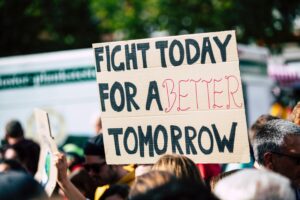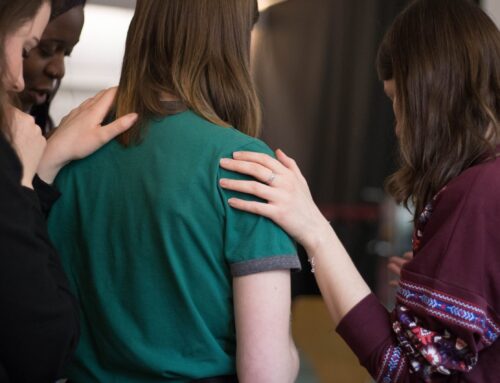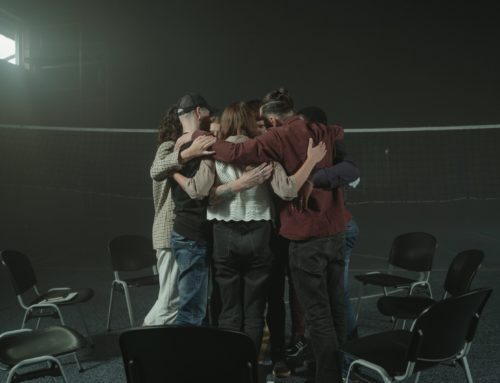 Higher education, like other social and cultural institutions that steer their work toward cultivating humanity and elevating human potential—meaning the potential of all humans—has been successful enough in those efforts to attract attention and set off alarms among people and groups who do not value the same outcomes. Those alarms have fostered opposition, including attempts to push back against changes in the status quo and efforts to retreat to a narrower understanding of human beings and their potential. The intrusion of courts (notably, but certainly not only, the Supreme Court), Congress, state legislatures, and governors into higher education—in areas including institutional governance, presidential searches, promotion and tenure processes, academic freedom, curricula, the selection of books and other course materials, anything related to social justice (especially the existence and purposes of offices and programs devoted to diversity, equity, and inclusion), and the availability of sexual and reproductive health programs and services for students—has become so common, so ordinary, and so unsurprising that any of us can easily (and almost unconsciously) slide into numbness, losing our individual and collective resolve and capacity to respond.
Higher education, like other social and cultural institutions that steer their work toward cultivating humanity and elevating human potential—meaning the potential of all humans—has been successful enough in those efforts to attract attention and set off alarms among people and groups who do not value the same outcomes. Those alarms have fostered opposition, including attempts to push back against changes in the status quo and efforts to retreat to a narrower understanding of human beings and their potential. The intrusion of courts (notably, but certainly not only, the Supreme Court), Congress, state legislatures, and governors into higher education—in areas including institutional governance, presidential searches, promotion and tenure processes, academic freedom, curricula, the selection of books and other course materials, anything related to social justice (especially the existence and purposes of offices and programs devoted to diversity, equity, and inclusion), and the availability of sexual and reproductive health programs and services for students—has become so common, so ordinary, and so unsurprising that any of us can easily (and almost unconsciously) slide into numbness, losing our individual and collective resolve and capacity to respond.
Many of us have developed a kind of outrage fatigue, and understandably so, given the wrenching, soul-starving, perspective-bending years of the pandemic, the increasingly inescapable evidence of profound climate change and its terrible costs to the health and wellbeing of all creatures great and small (us included) and the planet, the vast political and social regressions captivating so many nations, the seemingly never-ending shootings and battles about gun violence, ever-worsening health and economic inequity, and the awful potpourri of biases and prejudices that continue to fracture our society and poison our culture. Most of us are tired, very tired, and yet, already, a new academic year looms close.
Meanwhile, courts, legislators, and elected officials continue to do critical damage to the foundations, frameworks, and meaning of higher education every day, trying to somehow recast it in a constrained image that upends the central principles, purposes, and aspirations of liberal education.
So it is that while both faculty and staff in colleges and universities are working creatively and hard to help higher education make sense to students who, having been isolated and alienated during the pandemic, are now less engaged both inside and outside the classroom than were their pre-pandemic peers, they (the faculty and staff) must now struggle to make sense of higher education themselves as well, all over again. The painfully repetitive question, “Now what?” has become a regular ritual. Every morning seems to bring some version of that question—What political ally of a so-called populist governor has now become the only finalist for a university presidency? What do the latest new members appointed to a governing board intend to overturn or dismantle in order to silence history, imperil critical thought, and eliminate diversity, equity, and inclusion positions, offices, and programs? What’s next for the Supreme Court? What will they do in their next term following on Dobbs in 2022 (no constitutional right to abortion) and this year’s Harvard and UNC decisions on affirmative action in admissions, which abolished equity while trumpeting equality? Will the justices further privilege freedom of speech to allow more areas of discrimination against LBGTQ people—who include, always, some of every university’s students, faculty, and staff? Any of these, from affirmative action to reproductive rights, deserves detailed attention; here, we address the clear pattern that connects all of them.
Interference is evidence of a lack of two critical things: trust and confidence. Usually and historically, the practical consequence of a loss of trust and confidence in institutions of higher education was financial; states might use performance-based funding models, for example, to refocus the priorities of state-funded colleges and universities on certain metrics of institutional effectiveness and student success, such as retention and graduation rates. But carrots have given way to sticks more recently. Legislatures, courts, and elected officials who have imposed their will on colleges and universities in one way or another would probably argue that those institutions have failed to deliver and therefore must not be left alone to manage some or many aspects of their affairs. Threatened or proposed financial consequences are still very much on the table, but direct intrusion in policies and practices raises the ante significantly. There is a wide gap between “We will adjust your funding in relation to graduation rates for your students” and “You must discontinue these majors, courses, or programs,” or “You cannot choose that person to be your dean (or president),” or “You must shutter your office on diversity, equity, and inclusion.” Not much farther along come “You must accept this person as your president” and “You must discontinue support programs for students with particular identities.”
Were you to remove your analytical and critical thinking hat and put on your headlines only one, you might think this loss of confidence and trust in higher education is universal.
You might even think the intrusions by courts, legislatures, and elected officials reflect the thinking of most Americans. Last week, on July 11, Gallup reported that “American confidence in higher ed hits historic low,” because “only 36 percent of Americans have ‘a great deal’ or ‘quite a lot’ of confidence in higher education, which is down by about 20 percentage points from eight years ago.” Not mentioned in the headline is that there have also been substantial declines in public confidence in most of the other institutions Gallup tracks (including the Supreme Court, the presidency, health care systems, large technology firms, banks, churches, etc.), or that only small business, the military, and the police currently inspire greater public confidence than higher education. And there is an important point underlying the data: attitudes toward higher education are closely linked to political affiliations and ideologies. Levels of confidence in higher education have dropped much further among Republicans than Democrats and among people who have no college degree than people who have at least some college. Note, of course, the alignment of those results with the politics of the legislatures and officials who have chosen to interfere in the work of their state’s colleges and universities. Perhaps some Americans have lost confidence in higher education because of what it does do (e.g., teach history accurately), and others have lost confidence because of what it does not do, has not done, or cannot do (e.g., respond effectively to legislative or gubernatorial critiques, since doing so might cost administrators, staff, and faculty their jobs).
Results rather different from Gallup’s came about the same time from a larger study (about 2,000 respondents, versus 1,000 in the Gallup poll) reported this month from Columbia Teachers College. Their survey found that about two-thirds of Americans view public spending on higher education as a good investment and recognize the positive contribution of colleges and universities to both individuals and society; many would advocate more spending on higher education. The same pattern of differences linked to political ideology emerged in Columbia’s study—liberals were more likely than conservatives to say higher education spending is a good investment and agree that colleges and universities have made a positive contribution to individuals and society; levels of endorsement for higher education have declined somewhat over several years in that study, too.
Saying we must interpret surveys cautiously is not to say that we should be comfortable with declining public, or rather partial public, confidence in colleges and universities. The consequences of those attitudes have become starkly clear for institutions located in states and regions in which voting and governing majorities are older and highly conservative. There is good, if early, evidence of an exodus, or out-migration, of academics from state institutions in those regions and of the increasing difficulty those institutions are having in recruiting both faculty and staff as well.
Among the very dark, foreboding clouds encircling higher education in mid-2023, there is at least one that has a perversely silver lining.
While increasing levels of interference and intrusion in the policies, activities, and operations of college and universities demonstrate frustration among some significant fraction of their stakeholders, the attitudes and actions of judges, lawmakers, and public officials (who were formally called “public servants” in a less combative era) at least also demonstrate how very important higher education is, even to its fiercest and most micromanaging critics. Only something truly vital and absolutely essential warrants such acrimonious debate. Answering the common question, “Is college worth it?” requires more sophisticated and nuanced metrics than the career choice, economic, and financial ones most often used can deliver—and any metrics developed and applied to that question must reflect the complicating influences of rising attendance costs, post-graduation debt levels, and employment and economic trends. The kind of multivariate analysis required for that purpose is yet to be done, and the conditions and contexts that would influence the results are unstable. So a defensible answer to the “is college worth it?” question on economic grounds might be “It depends.” But at least to the extent than an institution of higher education attends to its dominant purpose—cultivating humanity—the outcomes over time have justified the investment; the juice, to use a business phrase, has been worth the squeeze.
Controversies about higher education will likely continue, and, given its place in society, they should. But interference in the research, teaching, service, and operations of colleges and universities will advance only political aims—which means such intrusions may accelerate and grow louder and harsher during election seasons. Listen for the hidden messages beneath polished, though hollow, claims of support for educational opportunity; the United States will not thrive as a democracy until it recognizes and alleviates the significant inequities that originally made affirmative action necessary. Reducing college costs and student debt loads may serve as important a purpose now as affirmative action did in the past. Restricting the freedom of students’ minds to explore difficult and challenging topics—such as this country’s utterly shameful histories of slavery, oppression of under-represented people (and the fact that those people have been for so long so under-represented), misogyny, and bias, hatred, and harm against lesbian, gay, bisexual, transgender, and queer human beings—will advantage no one except the persons whose racial, economic, and political privilege require that freedom and justice be distributed and experienced inequitably and differentially.
There should be no space in higher education, and no space in the conscience of this nation, for an institution to become a political instrument that simply reflects the power and satisfies the demands of people who do not want to share power, voice, and resources.
All of which calls us, yes, us—the tired, very tired, people who put students and their interests first—to action. Political forces require political responses, the most important and accessible (at least for now) of which is voting. Politicians who have forced their will on higher education and thereby undermined students’ full potential do not deserve financial support or re-election. But there is also something else: what to do with our own outrage. Outrage at an existential moment recently spurred strikes by hotel workers in southern California, the Writer’s Guild, and the Screen Actors Guild, and may fuel a much larger strike by UPS workers in August. The point of the comparison is not striking or unions, but solidarity. What could faculty and staff in higher education do if we came together in support of students to challenge and turn back the threats and actions that have already undermined our mission and purpose as educators and devalued the work we do? If we were successful, even in small ways, that juice might also be well worth the squeeze.
Richard P. Keeling, MD, Chairman, wrote this essay for the Council for the Advancement of Standards in Higher Education (CAS) and presented it at their Council of Representatives meeting on July 17, 2023.
Keeling & Associates, LLC is a comprehensive higher education consulting and professional services firm that creates “change for learning” through its consultation, advisory, and executive search professional services across North America. Let’s create change for learning together.






Leave A Comment